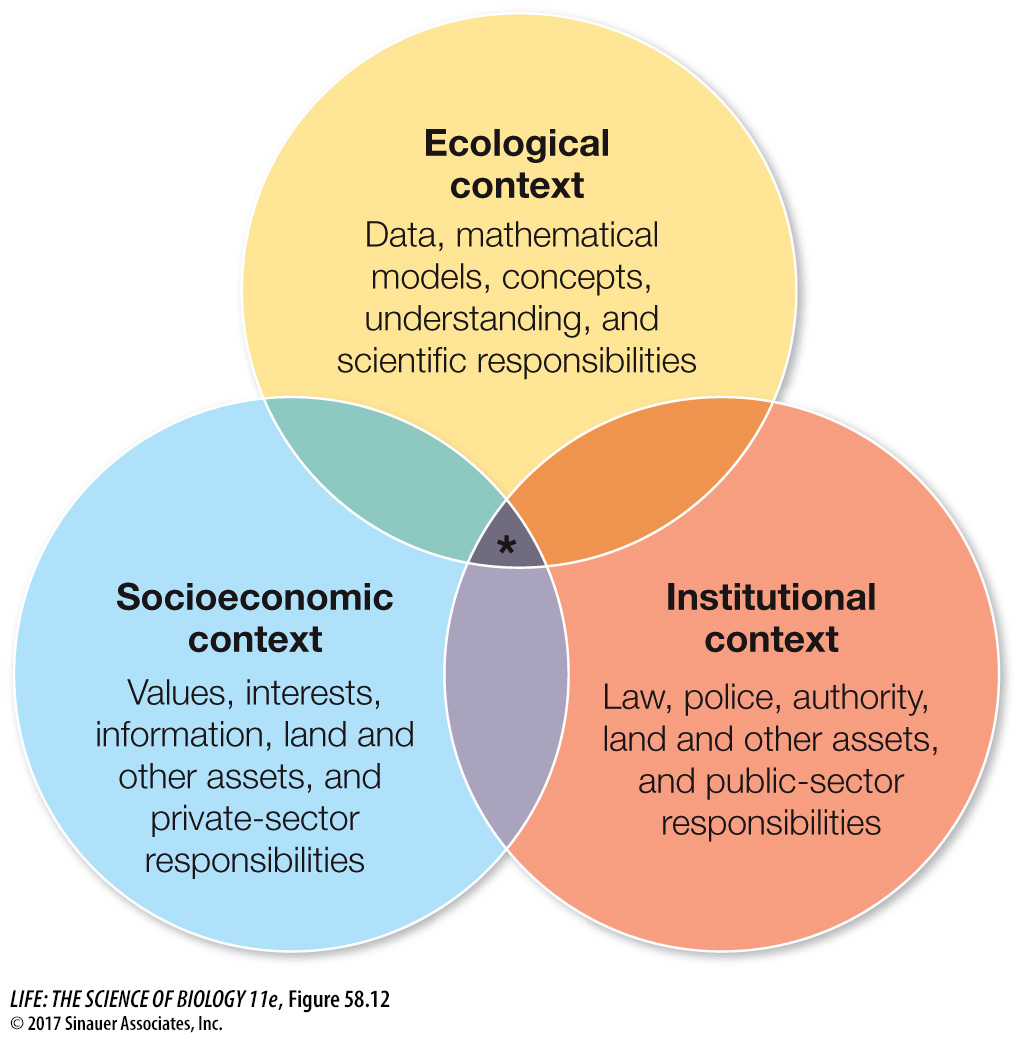key concept 58.3 Protecting Biodiversity Requires Conservation and Management Strategies
As you have seen multiple times in this chapter, human activities play an integral role in biodiversity loss. Consequently, it falls to humans to develop, strengthen, and defend policies that conserve biodiversity.
Humans are establishing protected areas to preserve biodiversity by restricting habitat loss and degradation.
Coupled human–natural systems are a necessary part of protecting biodiversity.
Captive breeding programs are temporary measures to maintain endangered species while threats in their natural environment are removed.
Biodiversity conservation integrates interests from ecological, institutional, and socioeconomic contexts into the decision-making process (Figure 58.12). Ecologists use scientific theory, empirical data, and tools from a variety of disciplines to help inform the protection and management of endangered and threatened species and ecosystems. They identify the factors that present risks to species and ecosystems and provide that information to managers, landowners, politicians, lawyers, nonprofit agencies, and the general public so that appropriate decisions can be made and action plans can be devised. Partnerships that incorporate these multiple contexts and stakeholders often result in conservation plans with the most support. Here we consider some conservation actions designed to protect and manage biodiversity in more detail.

Figure 58.12 Humans Are an Integral Part of Protecting and Managing Biodiversity Protecting and managing biodiversity involves integrating interests from ecological, institutional, and socioeconomic contexts. Partnerships that incorporate these multiple contexts (*) often result in conservation plans with the most support.
